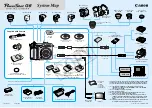
89
Basics of Infrared Thermometry
6.1 Emissivity
Definition
: The intensity of infrared radiation, which is emitted by each body, depends on the temperature
as well as on the radiation features of the surface material of
the measuring object. The emissivity (ε –
Epsilon) is used as a material constant factor to describe the ability of the body to emit infrared energy. It
can range between 0 and 100 %. A “blackbody” is the ideal radiation source with an emissivity of 1.0
whereas a mirror shows an emissivity of 0.1. If the emissivity chosen is too high, the infrared thermometer
may display a temperature value which is much lower than the real temperature – assuming the
measuring object is warmer than its surroundings. A low emissivity (reflective surfaces) carries the risk of
inaccurate measuring results by interfering infrared radiation emitted by background objects (flames,
heating systems, chamottes). To minimize measuring errors in such cases, the handling should be
performed very carefully and the unit should be protected against reflecting radiation sources.
Figure 56:
Capability of an object to emit radiation
I
Passed radiation
ε
Reflection
ρ
Transmission
τ
Emissivity=Absorption
ε + ρ+ τ = 1
Summary of Contents for PI LightWeight kit
Page 12: ...12 ...
Page 16: ...16 1 Used standards Figure 2 Used standards ...
Page 26: ...26 3 1 Mechanical Data PI 400 PI 450 LW Figure 6 Dimensions PI 400 PI 450 LW ...
Page 27: ...27 Installation 3 2 Mechanical Data PI NetBox LW Figure 7 Dimensions PI NetBox LW ...
Page 28: ...28 Figure 8 Controls and connections PI NetBox LW ...
Page 30: ...30 ...
Page 33: ...33 Operation Figure 9 Recommended video system integration of the PI LightWeight ...
Page 76: ...76 ...
Page 81: ...81 System recovery Figure 50 Rename option ...
Page 82: ...82 After this the system shuts down The NetBox is ready for use again Figure 51 System update ...
Page 87: ...87 Basics of Infrared Thermometry Figure 55 Noncontact thermometry ...




































